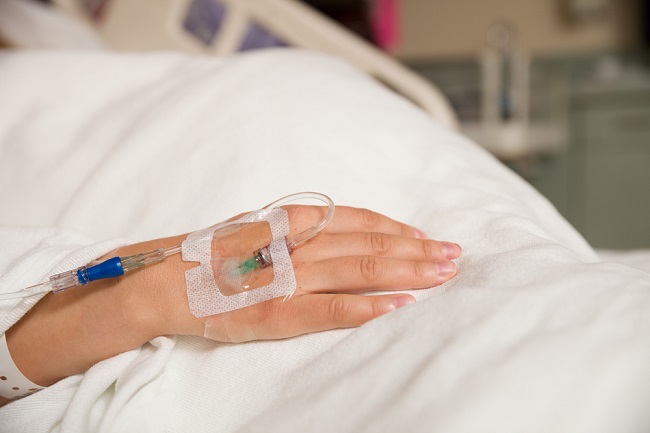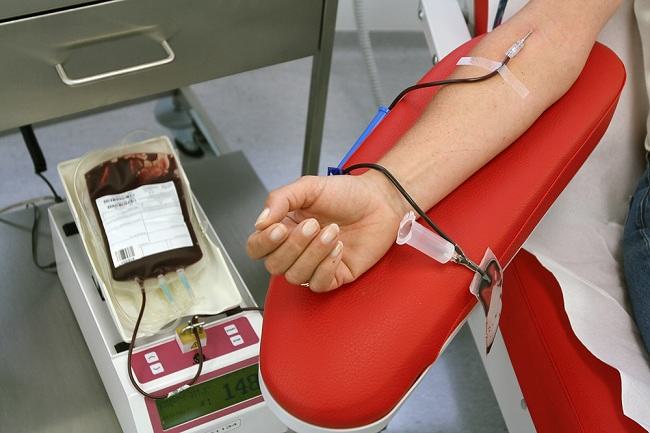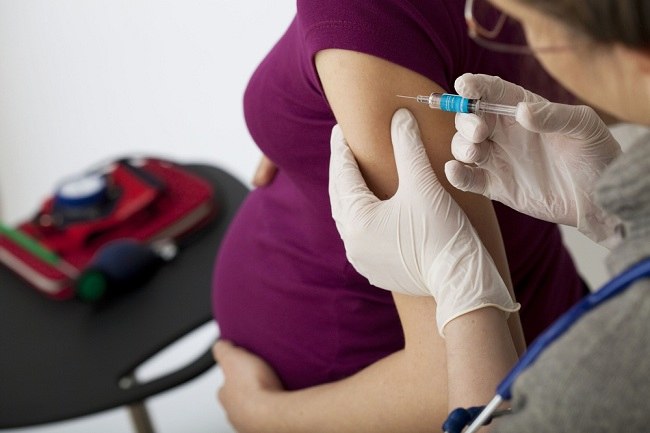Kaposi's sarcoma is cancer that originates from the blood vessels. When a person has Kaposi's sarcoma, the skin will appear small red or purplish patches or bumps resembling the color of bruised skin.
Kaposi's sarcoma is a rare type of cancer that arises due to a viral infection human herpesvirus 8 (HHV8). This virus attacks the cells that line the ducts and lymph nodes and or blood vessels.

In most people, this viral infection causes no symptoms or causes Kaposi's sarcoma. This cancer is usually found in people with low immune systems, such as people with HIV or people who take drugs that suppress the immune system (immunosuppressants), making them susceptible to infection.
Symptoms of Kaposi's Sarcoma
The main symptom of Kaposi's sarcoma is the appearance of red or purple patches on the skin or in the mouth. These patches are almost similar to bruises and are not painful. In some cases, Kaposi's sarcoma may appear as a red or purplish lump.
If it has spread to other parts of the body, Kaposi's sarcoma can cause several additional symptoms, such as:
- Swollen arms, legs, or face.
- Swollen lymph nodes.
- Shortness of breath, coughing up blood, and chest pain.
- Decreased appetite.
- Weight decreased drastically.
- Digestive disorders, such as nausea, vomiting, stomach pain, and diarrhea.
How quickly symptoms of Kaposi's sarcoma develop depends on the type. Some types of Kaposi's sarcoma take years to develop. But without treatment, most of these malignant tumors or cancers can get worse quickly within weeks or months.
Kaposi's Sarcoma Types and Treatment
Each type of Kaposi's sarcoma requires different treatment, depending on the severity and how quickly the cancer can spread. Based on the type of disease, Kaposi's sarcoma is divided into 4 types, namely:
1. Classic Kaposi sarcoma
Classic Kaposi's sarcoma is extremely rare. This type is more common in elderly men over the age of 60. On the body, classic Kaposi's sarcoma will appear in the lower legs or feet.
Unlike other types of Kaposi sarcoma, symptoms of classic Kaposi sarcoma develop very slowly over many years. This type of Kaposi's sarcoma is usually harmless. However, this disease still requires medical treatment. Classic Kaposi sarcoma can be treated in several ways, namely:
- Rradiotherapy or radiation therapy
Radiotherapy is done to kill cancer cells in Kaposi's sarcoma and prevent it from spreading to other parts of the body.
- Operation
Step surgery or surgery can be done with ordinary surgery, frozen surgery (cryotherapy), or electrosurgery (cautery). The goal is to remove cancerous tissue.
- ChemotherapyThe goal of this therapy is to kill Kaposi's sarcoma cancer cells in the part of the body where the cancer originates, and to kill cancer cells that have spread or spread to other parts of the body.
2. Kaposi's sarcoma HIV
Kaposi's sarcoma that occurs in people with HIV can appear in any part of the body. If it appears in the mouth, Kaposi's sarcoma can cause difficulty swallowing. While in the gastrointestinal tract, Kaposi's sarcoma can cause digestive disorders.
Kaposi's sarcoma HIV tends to develop very quickly if left untreated, especially if the immune system of a person with HIV is very weak. Therefore, HIV sufferers need to get antiretroviral (ARV) treatment to suppress the amount of HIV virus in their body.
ARV treatment also serves to prevent the occurrence of Kaposi's sarcoma in HIV patients. If Kaposi's sarcoma appears, the doctor will treat it with surgery, radiotherapy, and chemotherapy.
3. Kaposi's sarcoma due to organ transplant
This type of Kaposi's sarcoma occurs in people who have had organ transplant surgery. This is because after organ transplantation, patients need to take long-term immunosuppressant drugs to prevent organ rejection reactions from donors.
The side effect of this drug makes the immune system weaken, so the HHV-8 virus that causes Kaposi's sarcoma can easily attack.
Kaposi's sarcoma of this type can be aggressive and damage organs. Therefore, this disease needs to be treated as soon as possible by reducing the dose or changing the type of immunosuppressant drug consumed. If that doesn't work, radiotherapy or chemotherapy may be needed.
4. Kaposi's sarcoma is endemic to Africa
Kaposi's sarcona of this type generally occurs in Africa and is very rarely found in other areas. According to research results, Kaposi's sarcoma occurs because of the easy spread of the HHV-8 virus in several countries in Africa.
This type of Kaposi's sarcoma can spread through contact with the patient's saliva or due to poor environmental sanitation conditions. This type of Kaposi's sarcoma can affect children as well as adults.
In general, Kaposi's sarcoma can be treated as long as it is diagnosed quickly and treated quickly. However, because the causes are difficult to treat, for example due to HIV infection or side effects of immunosuppressant drugs, Kaposi's sarcoma can recur if the sufferer's immune system is weak again.
Therefore, if there are patches or lumps that resemble the signs of Kaposi's sarcoma on the skin or in the mouth, immediately consult a doctor. In determining the diagnosis of Kaposi's sarcoma, the doctor will perform a physical examination and supporting examinations, such as an HIV test, complete blood count, biopsy, CT scan, or endoscopy.
If the patient is proven to have Kaposi's sarcoma, the doctor will provide treatment according to the type of Kaposi's sarcoma that appears. After treatment is completed and Kaposi's sarcoma is declared cured, the patient still needs to have regular check-ups with the doctor to detect whether Kaposi's sarcoma is growing back.









